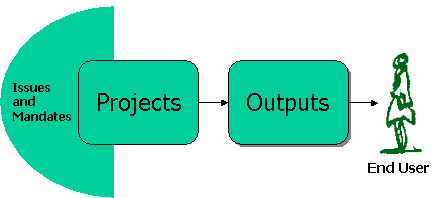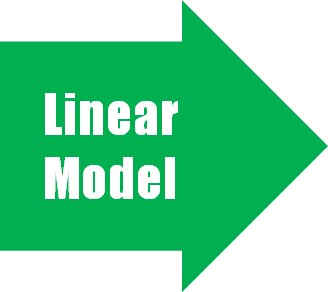Jack of all Trades, and Master of Quite-a-Few |
The Challenge of Information Delivery
W ith more and more information being made available on the internet, and with its increased access by users, it has become a priority to rethink information delivery processes. How does the user use information and for what purposes? How do we deliver information to better suit the needs of the user? How do we facilitate the construction of knowledge in the user's mind?With more and more information being made available on the web, and with users gaining greater access to this wealth of resources, it has become essential to rethink how information is delivered. Traditional methods of simply providing data or reports are no longer sufficient in a world where users seek not just information, but meaning and actionable knowledge. This raises important questions: How does the user engage with information, and for what specific purposes? How can we design delivery systems that are responsive to these purposes? More importantly, how can we facilitate the construction of knowledge in the user's mind, enabling them to move beyond passive consumption toward active use of information? This document argues that addressing these challenges requires a shift in the way we think about information delivery. We must move away from static, linear models that transmit information in a one-way flow from source to user, and toward more dynamic, cross-linked systems that reflect the complexity of real-world issues. Such systems should empower users to explore connections across themes, integrate diverse sources, and construct their own understanding in ways that support informed decision making and meaningful action. This shift is vital if we are to meet the growing demand for knowledge that is relevant, adaptable, and capable of driving positive change. The core arguemnt of this document is that the way we deliver information must evolve from linear models toward dynamic, cross-linked systems that empower users to construct knowledge and act on it. The Linear Model: Strengths and Weaknesses The current process of delivery of information to the end user (and the construct of knowledge in the user therein) is essentially linear. A programme or project - based on a framework of desired outcomes and mandates - develops a set of outputs, which is then delivered to the end-user.
 Figure 1: The Linear Model Much of this is rarely evaluated or monitored to see if the user has actually utilized the outputs, or even analyzing what is it the user really wants or needs. Sometimes, the evaluation process may be lopsided to show only the 'desired' results. This is the Linear Model that is essentially static and one-way, though it may contain feedback loops to strengthen the delivery process. The disadvantage of this model is that it rarely takes the dynamic needs of the user into consideration when programmes/projects are developed. While the outputs may be useful, there is no"ownership" and does not always meet the expectations and needs of the user - especially when it is the general public.
Figure 2: The Linear and Cross-Linked Models
The Cross-Linked Model: A Dynamic Approach An emerging model takes a more dynamic multi-modal approach, and makes intensive use of the outputs of a programme or research project. In this model, outputs of a programme or a series of projects are compiled into a common information-and-knowledge 'pool'. The pool can contain not only resources developed by the different projects, but also external resources available on the internet. This is then reorganized and patterned into a set of clusters that deal with different, but related topics and themes.
 Figure 3: The Cross-Linked Model
The clustered themes reflect the planned outputs of the project, but may not necessarily be exactly the same or may not follow the themes of the projects that generated the information. It enables a broader range of themes to be delivered to the end user. If constructed properly, it also enables this mix-and-match to actually be done at the users' end, further enhancing its usability and adaptability. This is the Cross-Linked Model. The advantage of this approach is that it enables a broader range of themes and issues to be clustered together into new themes and issues, before being delivered to, or constructed by, the end-user. Due to the broader approach and clustering, the user will be in a better position to find and identify himself/herself with a particular theme, and then explore the cross-cutting interlinkages between that theme cluster and other clusters. Implications for Sustainability This is crucial for a future based on sustainability - the ability to not only understand and advocate one's own position and views, but to understand and appreciate other's positions, that would eventually lead to commonly agreed goals of sustainability. The shift from linear to cross-linked models of information delivery has significant implications for advancing sustainability. Sustainability challenges are, by nature, complex and interconnected, involving environmental, social, economic, and governance dimensions. A linear delivery model, with its static and one-way flow of information, often fails to capture these interlinkages or enable users to see the broader context. In contrast, a cross-linked model allows users to access and integrate knowledge across multiple themes and disciplines, encouraging systems thinking. This approach helps individuals and organizations understand how their actions relate to wider sustainability goals, and fosters collaboration by highlighting shared challenges and opportunities across sectors. By empowering users to construct knowledge dynamically, cross-linked information delivery supports more inclusive and informed decision making. It encourages the exploration of trade-offs, synergies, and unintended consequences that are critical in sustainability planning. It also helps create communities of practice where diverse stakeholders can contribute knowledge and learn from one another, building collective ownership of sustainability solutions. In this way, effective information delivery is not just about transmitting data but about enabling transformative action toward a more sustainable and resilient future.
Building Jacks and Masters: A New Information Paradigm For this to happen, we need a small modification of the old adage: "Jack of all trades, and Master of none" We do need a Jack-of-all-Trades (i.e. a person who can understand and appreciate all the problems and issues involved - the big picture - with which he or she performs), but also someone who is Master-of-Quite-a-Few (i.e. a person who is well versed in his/her speciality and is also able to articulate it vis-a-vis the big picture), in order to address the myriad challenges of sustainability.
And therein lies the challenge for proper information delivery: to create Jacks (and Jills) of all trade, while making him/her Master of quite a few trades!
Please send any comments and suggestions to Hari Srinivas at hsrinivas@gdrc.org
|
 Hari Srinivas - hsrinivas@gdrc.org Hari Srinivas - hsrinivas@gdrc.orgReturn to the Information Design Page |



